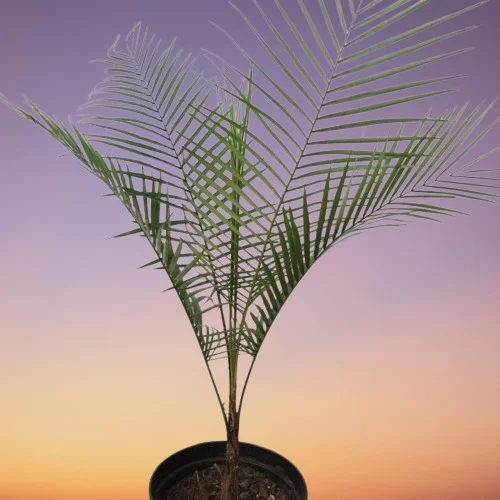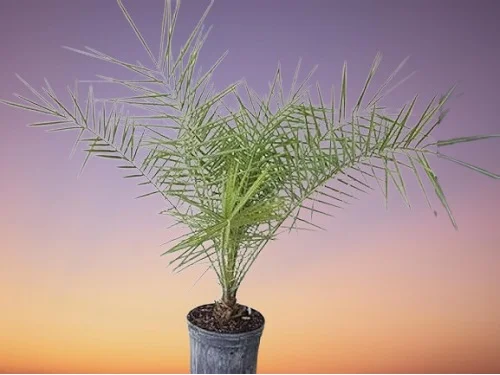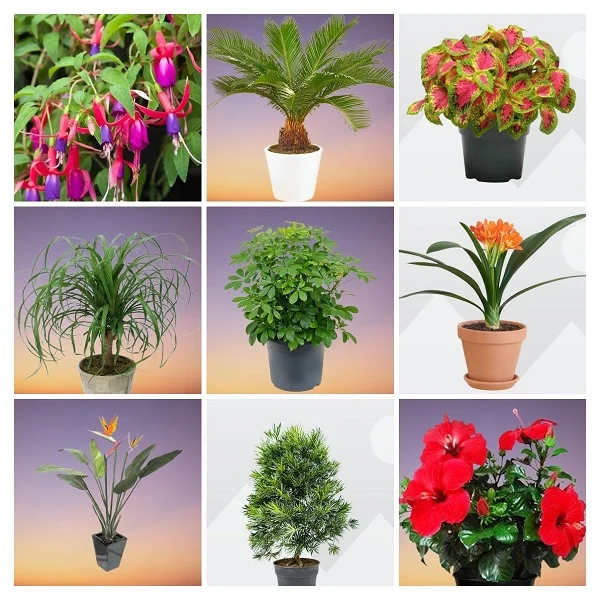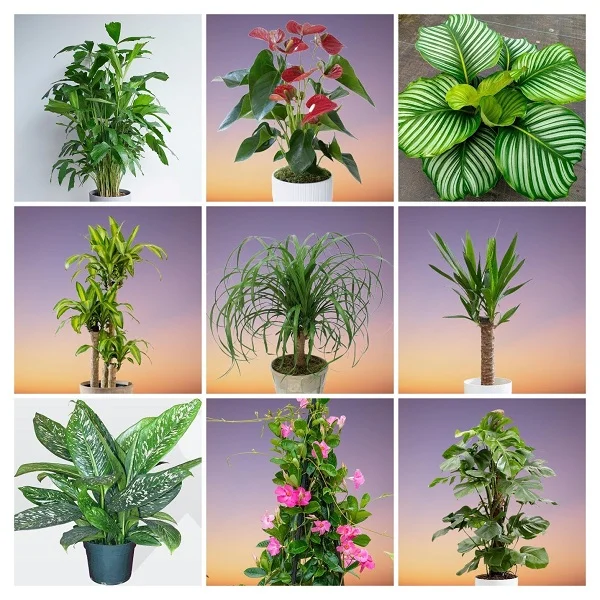Weddell's Palm (Syagrus weddelliana) Indoor Care, Propagation, Common Problems and Fixes
Some links in this post may be affiliate links
Weddell's Palm (Syagrus weddelliana) requires very bright light with some direct sunshine, humid environment, average warmth and moist soil, rich, free-draining soil coupled with monthly feeding in the growing season.
Syagrus weddelliana also called Queen Palm or Dwarf Coconut Palm is one of the popular palms and is closely related to the Coconut Palm.
However, Queen Palm is much smaller and more tolerant to cold than the Coconut Palm. It does not have the hardiness of most palms and may be difficult to grow under room conditions.
On account of its requirement for very bright light and exposure to some direct sunshine for it to flourish, Dwarf Coconut Palm is one of the best sun-loving plants for a sunny location.

Botanical name: Syagrus weddelliana
Synonym: Cocos weddelliana
Family: Arecaceae
Tribe: Cocoseae
Common names: Dwarf Coconut Palm, Queen Palm, Weddell's Palm
Origin
Syagrus weddelliana is native to the State of Rio de Janeiro in southeastern Brazil where it thrives in the humid shade of the rainforests.
Size
Queen Palm has a single trunk stem and has a small stature, only growing to a height of 6 feet with a trunk diameter of about 3.5 feet.
Is Weddell’s Palm toxic to pets?
Weddell's Palm is non-toxic to both humans and pets. It is safe to grow indoors. Indeed the fruits are edible and resemble and taste like coconuts.
Syagrus weddelliana benefits
- Low maintenance: It requires minimal care once established.
- Drought-tolerant: It can handle some neglect in watering.
- Air-purifying: Helps remove toxins from indoor air.
- Pet-Friendly: Non-toxic to cats and dogs.
- Tropical elegance: Features arching fronds that enhance indoor aesthetics.
- Compact growth: Stays small, making it ideal for apartments and offices.
Where to Buy
If you are looking to acquire Dwarf Coconut Palms for your collection, they are available online on Etsy (Link to Etsy).
Syagrus weddelliana Care Indoors
Whether grown in a pot or decorative planter, Weddell's Palm adds a lush, exotic feel to homes and offices. This guide will cover everything you need to know about growing and maintaining Syagrus weddelliana indoors, from light and watering needs to soil, pruning, and common problems.
Weddell's Palm (Syagrus weddelliana) blossoms in very bright light with some direct sunshine, humidity of 60-70%, average warmth of 15-250C and moist soil, fertile, free-draining, all purpose potting soil coupled with monthly feeding during the growing season.
Syagrus weddelliana requires regular pruning to keep it neat, minimize pest and disease infestation as well as prevent the plant from wasting energy in developing flowers. Repotting is necessary every year after the first year of growth. Keep reading for a more detailed account on these growing conditions.

Light Requirements
Weddell's Palm grows best in very bright light with at least 6-8 hours of direct sunshine. However, avoid hot direct sunlight as it can result in scorching of the leaves, causing brown edges.
If light is too little, the growth will be slow, and leaves may turn pale and weak. Move it to brighter light or instal a grow light if the natural lighting is not enough.
Turn the pot regularly to ensure that the palm receives light on all sides for uniform growth and prevent lopsided growth.
Watering
Water your Weddell's Palm liberally and keep the soil moist at all times during the growing season. Avoid overwatering to prevent yellowing of leaves.
Decrease watering in the cold season and allow the soil to slightly dry out between waterings. Underwatering may cause the leaves to begin browning.
Like all palms, Queen Palm is sensitive to chlorine and other chemicals dissolved in water, therefore water with chlorine-free water only. Avoid getting the base wet as it can lead to rotting and eventual death of the palm.
Do not allow the palm to sit in soggy soil as it may result in root-rot and death of the palm. Make sure that the pot has a drainage hole and that the soil is well-drained.
Temperature and Humidity
Weddell's Palm prefers warm temperatures of 15-250C with a minimum of -40C in the cold season. Keep it away from cold drafts as they can cause reduced growth and brown leaf tips.
Dwarf Coconut Palm requires high humidity of 60-70% to thrive. To uplift humidity, set the pot on a wet pebble tray or use a cool mist humidifier. Too low humidity can result in brown leaf tips and edges. Ensure that there is good air circulation to prevent fungal diseases.
Fertilizer
Feed Weddell's Palm with a balanced, liquid fertilizer monthly during the growing period. Do not feed during the cold season as growth is minimal at this time.
To prevent fertilizer build up which is indicated by leaf burn and brown spots, regularly flush the soil. Run a stream of water through the soil until water comes out through the drainage hole. Allow the stream of water to run for some time and repeat the process several times.
Potting Soil
The best soil for Dwarf Coconut Palm should be rich in organic matter and free-draining to prevent it from getting soggy while providing the required nutrients. Most all purpose potting mixes are ideal for this palm.
Repotting
Weddell's Palm requires to be repotted once every year at the beginning of the growing season. Use a pot 1-2 sizes larger than the current one.
Repotting in the first one year after germination is not be necessary as the plant obtains its nutrients from the nut. Ensure that the pot has a drainage hole to prevent the soil from getting soggy as it can lead to rotting. Check out these ceramic pots with drainage holes on Amazon.
Pruning & Grooming
Pruning Queen Palm is easy. Cut away the old brown and dry fronds near the soil surface to maintain the palm neat and tidy as well as minimize pest and disease infestations.
Where seeds are required for propagation, allow the fruits to mature and drop then cut away the spent flower stalk. Where the seeds are not required, cut away the flower stalk immediately it begins to form to prevent the palm from wasting energy on developing the flowers and seeds.
Regularly clean the leaves by splashing water with a steady stream of water to get rid of dust and discourage pest infestations.
Propagation
Weddell's Palm (Syagrus weddelliana) propagation can be done from the nut but it is not easy.
How to propagate Weddell's Palm from the nut
Bury the nut halfway in moist, free-draining soil. Place in a warm place and keep the soil moist through out.
Germination may take upto 6 months. For the first one year, the palm gets its nutrients from the nut therefore there is no need to repot it. It is advisable to start germination in a slightly larger pot.

Syagrus weddelliana Problems
Weddell's Palm (Syagrus weddelliana) growing problems include brown leaf tips, browning leaves, yellow leaves, pests and diseases among others. Keep reading for more on these problems, their remedies and solutions.
Diseases
Pseudomonas is a common disease in Queen Palm which is indicated by brown and wet lesions that run parallel to the leaf vein. Isolate the affected palm to prevent spread to other plants or discard the plant as no cure is effective.
The other common disease is leaf spot disease which is characterized by brown, moist spots on the foliage. Seperate the infected plant and treat it with a systemic fungicide. Ensure to follow the recommendations on the label.
Pests
Weddell's Palm pests are spider mites, scale insects and mealybugs. Regularly check underneath the palm's leaves for these pests. Isolate the affected palm to prevent spread to the other plants and treat it for the pests. Learn how to identify and get rid of pests in houseplants.
Browning leaves
The lower leaves of Dwarf Coconut Palm may turn brown and droop due to age; remove by cutting and not pulling. If the browning of the leaves is general and accompanied by rotting, the reason is root-rot which is promoted by soggy soil. Ensure that the pot has a drainage hole and that the soil is well-drained.
Brown leaf tips
Weddell's Palm brown leaf tips are due to four possible reasons. Trim off the brown tips with sterilized scissors to maintain the palm neat. One reason is low humidity. To increase humidity, set the pot on a wet pebble tray or use a cool mist humidifier.
The second reason for Dwarf Coconut Palm brown leaf tips is underwatering. Water the palm thoroughly and keep the soil moderately moist during the growing season. Cut down on watering in the cold season but do not allow the soil to dry out completely. Learn more on how to water houseplants the right way.
The third reason for Queen Palm brown leaf tips is cold drafts from windy doors and windows, air conditioning units and others. Protect it from drafts to maintain an average warmth of 15-250C. Check out this guide on understanding temperature for houseplants.
The fourth reason for Weddell's Palm brown leaf tips is damage by touching. Place the palm from the line of traffic to avoid bruising.
Declining growth
The cause of growth decline in Dwarf Coconut Palm is low light but not inadequate nutrition. Move the palm to a brighter spot where it can receive very bright light with 6-8 hours of sunshine or instal a grow light if the natural light is not enough. Check out this post on understanding light for houseplants.
Yellowing leaves
One of the causes of yellow leaves in Weddell's Palm is overwatering. Water the palm thoroughly and keep the soil moderately moist but not soggy. Ensure the pot has a drainage hole and the soil is well-drained.
Brown leaf spots
Dwarf Coconut Palm brown leaf spots are due to two possible causes. Remove the affected leaves and discard to keep the plant neat. One cause is overwatering or soggy soil. Avoid overwatering, make sure that the soil is free-draining and that the pot has a drainage hole to prevent the soil from getting soggy.
The second cause of Dwarf Coconut Palm brown leaf spots is sudden decrease of temperature due to cold drafts. Protect the palm from drafts to maintain an average warmth of 15-250C.
Totally discolored or spotted leaves
Magnesium, Manganese and Iron deficiency are the cause of totally discolored and spotted leaves in Queen Palm. Feed the palm regularly with a good fertilizer which contains micro-nutrients. Provide ocassional pinches of Magnesium and chelated Iron for the palm.
Conclusion
Weddell’s Palm (Syagrus weddelliana) is a beautiful, easy-to-care-for, and pet-friendly houseplant. Whether showcased in a decorative pot or used as a striking focal point, it flourishes with the right balance of light, water, and occasional maintenance. By following these indoor care guidelines, you can keep your Weddell’s Palm healthy and thriving for years to come.
Frequently Asked Questions
1. How much sunlight does Weddell’s Palm need?
Weddell’s Palm thrives in bright, indirect light but can tolerate some shade.
2. How often should I water Syagrus weddelliana?
Do not water on a schedule. Water Syagrus weddelliana when the top 1–2 inches of soil are dry. Avoid overwatering.
3. Can Weddell’s Palm grow in low light?
Weddell’s Palm can survive in moderate light, but too little light may cause slow growth and weak fronds.
4. Why are my Weddell’s Palm’s leaves turning brown?
Brown tips in Weddell’s Palm are often due to low humidity or salt buildup from over-fertilization.
5. How fast does Weddell’s Palm grow?
Weddell’s Palm has a slow growth rate, reaching 3–6 feet indoors over several years.
6. Can I grow Weddell’s Palm in water permanently?
No, Weddell’s Palm requires well-draining soil for long-term health.
7. Is Weddell’s Palm toxic to pets?
No. Syagrus weddelliana is non-toxic to cats and dogs, making it a safe houseplant.
You liked it? Share on social media.
Related Content
Amazon Associates Disclosure
Homeplantsguide.com is a participant in the Amazon Services LLC Associates Program, an affiliate advertising program designed to provide a means for sites to earn advertising fees by advertising and linking to amazon.com.





